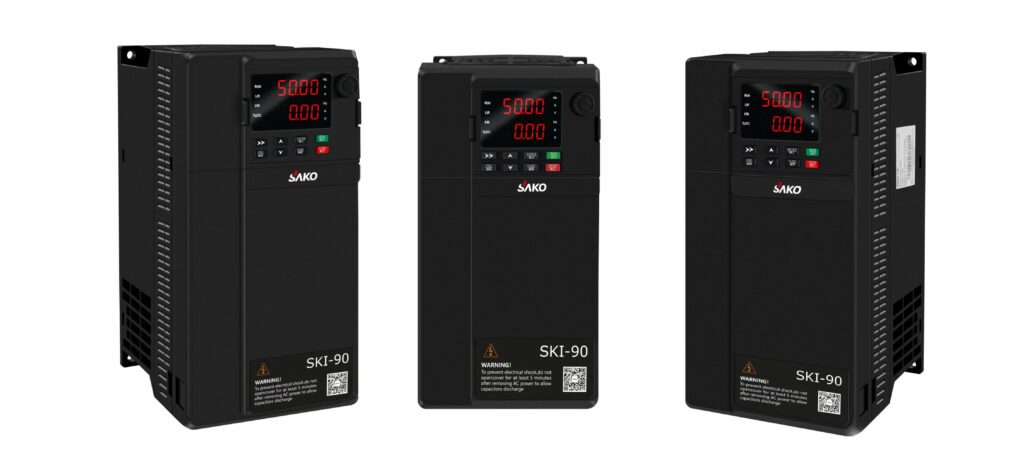In the field of modern industrial automation, general-purpose vector VFDs like SAKO VFDs are playing an increasingly important role. With their numerous advantages, they have become essential tools for companies looking to boost production efficiency, reduce energy consumption, and enhance equipment performance.
1. Energy Efficiency
SAKO general-purpose vector inverters automatically adjust motor speed and output power based on actual load demand. During light or partial loads, they reduce motor speed, significantly cutting energy consumption. For example, in fans and pumps, load is usually proportional to the cube of speed. By adjusting speed with an inverter, substantial energy savings can be achieved. Statistics show that using vector inverters can save between 20%-50% of energy, lowering production costs and boosting economic efficiency for companies.

2. Precise Speed Control
SAKO vector inverters offer high-precision speed control, allowing for smooth adjustment of motor speeds over a wide range—from low speeds to high speeds. Whether it’s precise speed control in the production process or meeting the speed requirements of different working conditions, SAKO inverters deliver consistently. Industries like printing and textiles, which demand high precision in motor speed, rely on vector inverters to ensure product quality and consistency.
3. Soft Start Feature
Traditional motor starting methods generate large startup currents that can impact the power grid and equipment. SAKO inverters, with their soft start feature, gradually increase motor voltage and frequency, enabling a smooth startup. This reduces startup current, minimizing grid impact and extending the life of motors and equipment. Additionally, soft start reduces mechanical wear and maintenance costs.
4. Improved Power Factor
SAKO vector inverters enhance motor power factors, reducing reactive power losses. By efficiently controlling the motor, they improve power grid quality during operation. For equipment with low power factors, using vector inverters can solve power factor compliance issues, avoiding penalties and reducing operational costs.
5. Enhanced Motor Performance
Vector control technology is a core advantage of SAKO inverters. It allows precise motor control, ensuring excellent performance under complex conditions. For instance, even at low speeds, SAKO inverters provide sufficient torque for smooth motor operation. At high speeds, they maintain stability and reliability. SAKO inverters also offer various protection functions such as overload and overcurrent protection, ensuring motor safety.
6. Easy Integration and Operation
SAKO general-purpose vector inverters typically feature a user-friendly interface, making them easy to operate. They integrate seamlessly with various automation control systems, enabling smart control. Additionally, installation and setup are straightforward, with no need for extensive equipment modifications—making upgrades and transformations cost-effective and simple for businesses.
In summary, SAKO general-purpose vector inverters are widely used in industrial automation due to their energy efficiency, precise speed control, soft start, power factor improvement, enhanced motor performance, and ease of integration. As technology continues to advance, the performance of these inverters will keep improving, providing companies with even more robust support for their development.
